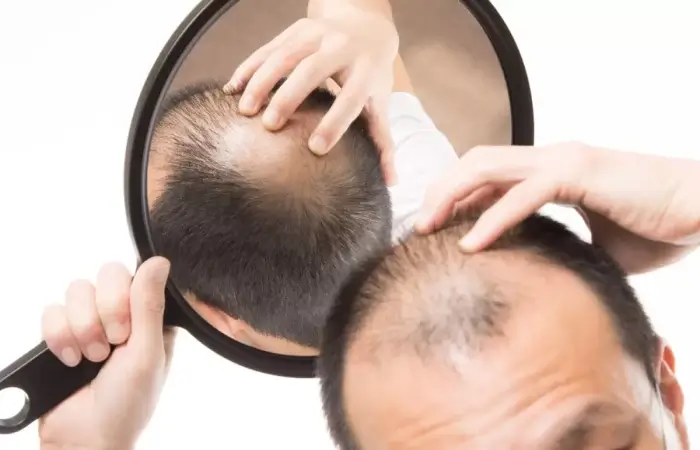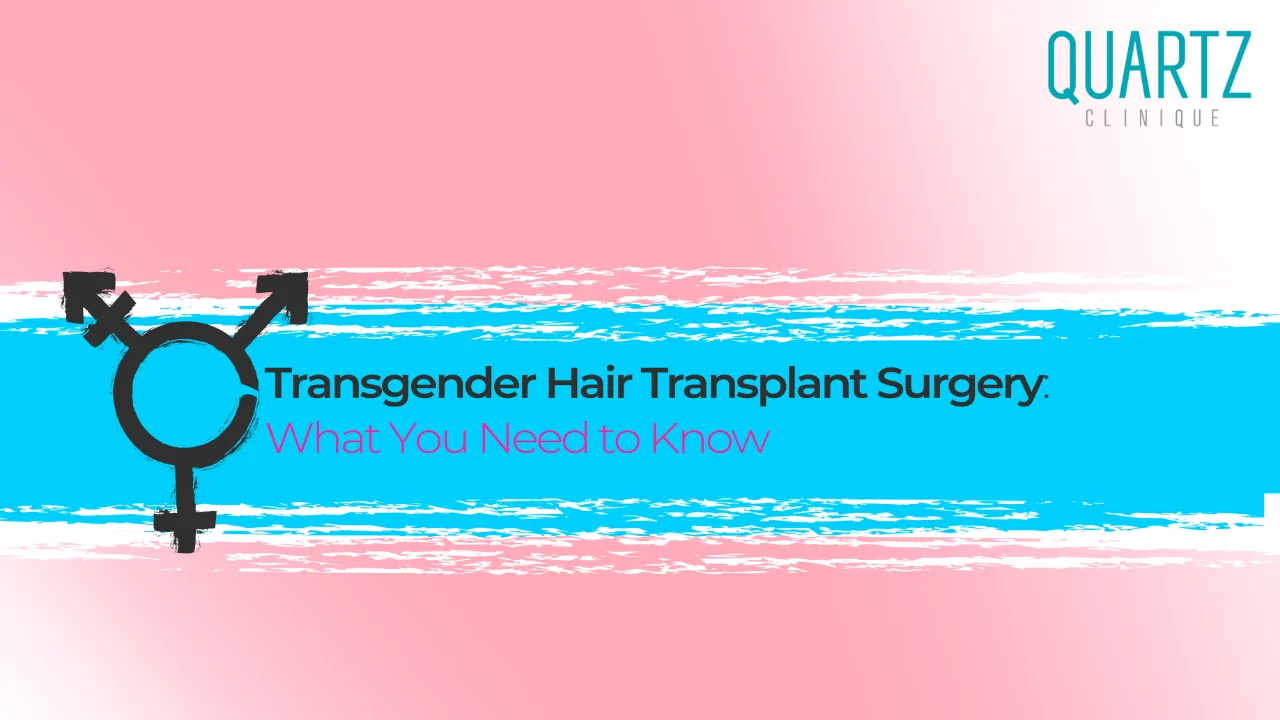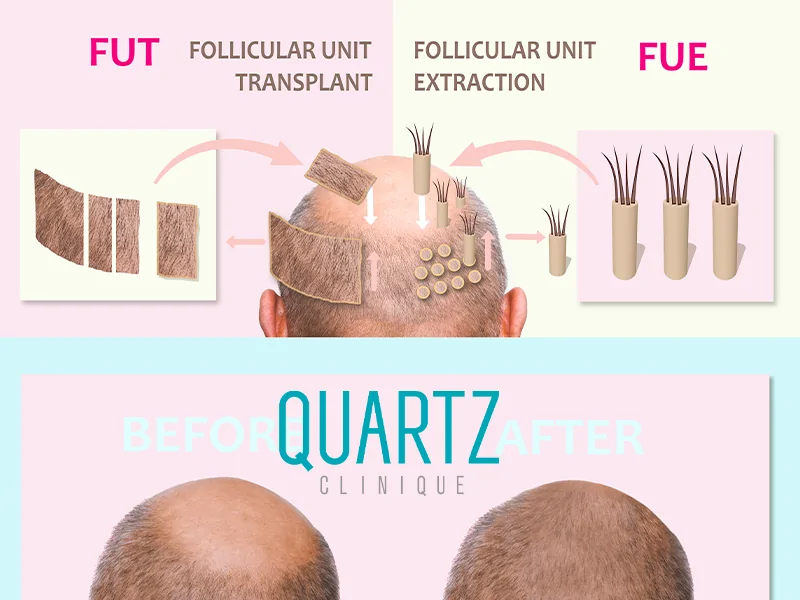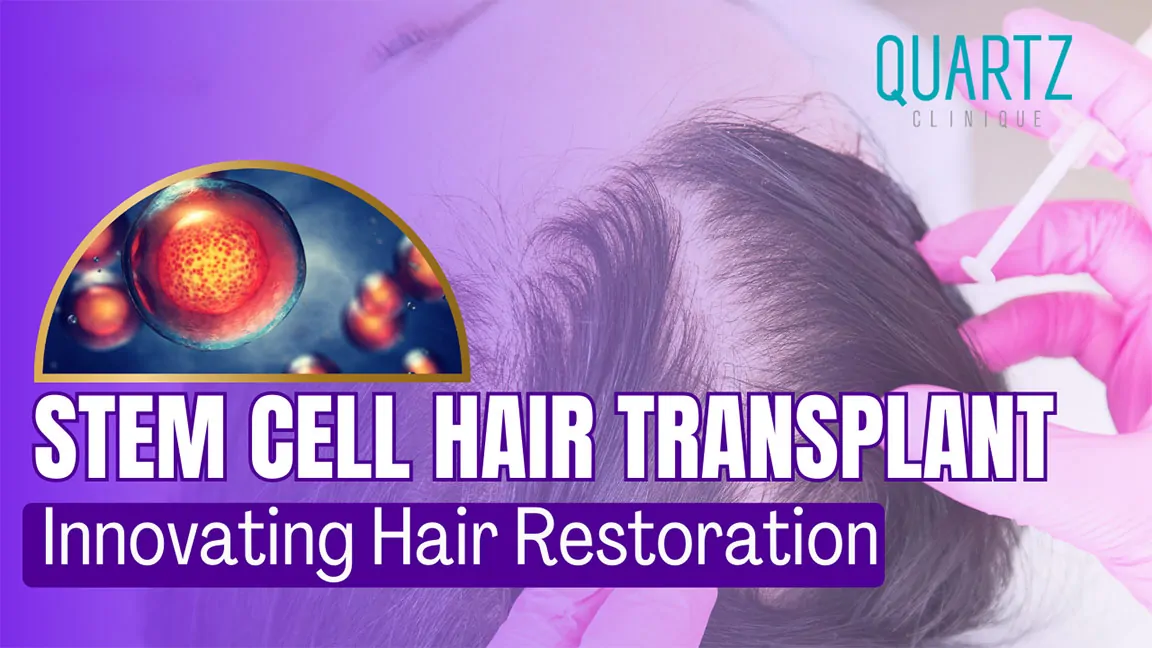
Norwood Scale 6-7 Hair Transplantation
During the hair transplantation process, the severity and pattern of hair loss are assessed using standardized classification systems. One of the most recognized of these is the Hamilton–Norwood Scale, which determines the degree of baldness in male pattern hair loss on a scale from 1 to 7. The system was first developed by Dr. James Hamilton in 1951 and later modified by Dr. O’Tar Norwood in 1975, hence its current name.
At Quartz Clinique, the Norwood Scale is an essential diagnostic tool used to evaluate the stage of baldness, plan the transplantation strategy, and estimate the number of grafts required for natural and permanent results.
What Is the Hamilton–Norwood Scale?
The Norwood Scale is the internationally accepted standard classification system for male pattern baldness. It allows specialists to document hair loss progression in a structured way and to develop individualized hair restoration plans.
By defining clear stages of baldness, this scale enables physicians to determine:
- The extent of hair loss,
- The number of grafts needed, and
- The suitability of the donor area for transplantation.
Using the Norwood Scale simplifies both diagnosis and treatment planning, ensuring an efficient and medically precise hair transplant process.
How Many Grafts Do I Need According to the Norwood Scale?
Male pattern baldness typically begins with hairline recession at the temples and thinning at the crown. Over time, these areas expand and merge, leaving only a horseshoe-shaped ring of hair around the sides and back of the scalp.
The number of grafts required depends on the degree of baldness as defined by the Norwood Scale.
| Norwood Stage | Description | Approximate Grafts Needed |
|---|---|---|
| Norwood 1 | Minimal or no hair loss | 0 – 1,000 grafts |
| Norwood 2 | Mild frontal hairline recession | 1,000 – 1,500 grafts |
| Norwood 3 | Deep frontal and temporal recession | ≈ 2,000 grafts |
| Norwood 4 | Hairline recession with bald spot on crown | 3,000 – 3,500 grafts |
| Norwood 5 | Severe hair loss, bridge of hair still separates bald areas | 3,500 – 4,500 grafts |
| Norwood 6 | Bridge between bald areas disappears, extensive loss | 4,500 – 6,000 grafts |
| Norwood 7 | Only a narrow band of hair remains on the sides/back | 7,000 + grafts |

Surgical Design for Norwood 6–7 Degree Hair Loss
Patients classified as Norwood 6 or 7 experience advanced baldness, where the donor area may not provide enough viable follicles for transplantation. In such cases, alternative regenerative approaches like stem-cell-assisted hair restoration are considered.
At Quartz Clinique, specialists may use:
- FUE (Follicular Unit Extraction) for grafts taken from dense donor zones.
- DHI (Direct Hair Implantation) for precise implantation and natural density.
- Stem Cell–Based Hair Regeneration to enhance graft count and follicle vitality when donor supply is limited.
- This combined approach maximizes density and coverage even in advanced cases of baldness.
What Is FUE Hair Transplantation?
FUE (Follicular Unit Extraction) involves harvesting individual hair follicles from the donor area—usually the back of the head—under local anesthesia. After sufficient grafts are collected, tiny channels are opened using micro-motor tools, and follicles are implanted one by one.
Advantages include:
- Minimal scarring,
- Fast healing, and
- Natural, dense appearance.
What Is DHI Hair Transplantation?
DHI (Direct Hair Implantation) uses a specialized CHOI implanter pen to extract and implant hair follicles directly, without creating separate incisions.
This technique shortens the overall procedure time, minimizes trauma, and increases follicle survival rates—especially beneficial for dense hairline design.
Stem Cell–Assisted Hair Transplantation
When a patient lacks sufficient donor follicles (common in Norwood 6–7 cases), autologous stem cells can be harvested and cultivated in a laboratory to regenerate new follicles. These lab-grown follicles are genetically identical to the patient’s original hair, ensuring compatibility and natural results.
This method offers a groundbreaking solution for individuals previously deemed unsuitable for traditional transplantation.
Norwood 6–7 Hair Transplantation in Young Patients
Young adults suffering from advanced hair loss often experience psychological distress, as baldness can make them appear significantly older. For Norwood 6–7 cases in younger individuals, careful donor evaluation and long-term planning are crucial.
With stem-cell-supported FUE or DHI methods, sustainable and aesthetically balanced results can be achieved.
Frequently Asked Questions (FAQ)
What Is My Hair Loss Level?
Your hair loss level can only be accurately determined by a specialist using the Norwood Scale during a clinical examination. Depending on the degree, the number of grafts required ranges from 1,000 to over 7,000.
Can Hair Transplant Results Be Permanent?
Yes. Once transplanted follicles adapt to their new location, they retain the genetic resistance of the donor hair and grow permanently throughout life.
How Long Does the Procedure Take?
The duration depends on the number of grafts and the chosen method (FUE or DHI).
- FUE: 6–8 hours on average
- DHI: 4–6 hours on average
Is Stem Cell Hair Transplantation Safe?
Yes, because the stem cells are derived from the patient’s own tissue, eliminating any risk of rejection or allergic reaction. The procedure is performed under sterile laboratory and surgical conditions.
What Can I Expect After Hair Transplantation?
After recovery, transplanted hair grows naturally. It can be washed, cut, dyed, and styled like normal hair. Maintaining a balanced diet rich in biotin (vitamin B7) supports stronger and shinier growth.
How Soon Can I See the Final Results?
Initial growth begins around the 3rd month, and the final appearance becomes evident between 9–12 months post-operation.
The Hamilton–Norwood Scale plays a critical role in diagnosing, classifying, and treating male pattern baldness.
At Quartz Clinique, each hair transplant plan—especially for Norwood 6–7 cases—is developed through advanced assessment, personalized design, and modern techniques such as FUE, DHI, and stem-cell-assisted restoration.
This scientific and individualized approach ensures permanent, dense, and natural-looking hair for every patient.






